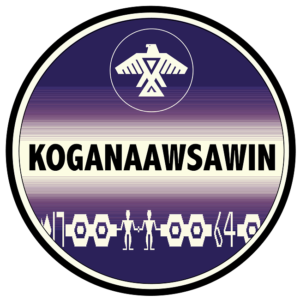About the Anishinabek Nation Child Well-Being Law
 ANISHINABEK CHILD WELL-BEING LAW
ANISHINABEK CHILD WELL-BEING LAW
In 2008, the Anishinabek Chiefs-in-Assembly passed a Grand Council Resolution that stated that the Anishinabek need to assert jurisdiction over child well-being and begin a process to develop a law and a system for the Anishinabek by the Anishinabek.
THE PATH TO SELF-GOVERNMENT
Starting in 2009 and concluding in 2010, the Anishinabek Nation held 97 meetings, both on and off-reserve, in total as a means to learn from the member First Nations and gather information. During these meetings, the Anishinabek Nation representatives asked for input on what should change in the child welfare system and how should Anishinabek raise and care for our children. The first draft of the Child Well-Being Law was recorded in writing after all of the meetings concluded.
The initial draft Law was then presented to Anishinabek citizens in a second round of on and off-reserve meetings where additional input was provided and gathered and later utilized to enhance the draft Law.
In 2010, the Child Well-Being Working Group was established. First Nation Chiefs and Councillors, current or retired Social Workers, Directors of Social departments, citizens from Anishinabek Nation member First Nations, agency representatives, agency directors, and band representatives have participated in Working Group meetings.
The Child Well-Being Working Group further refined the draft Law. The draft Law was reviewed at meetings held throughout Anishinabek First Nations, urban centres across Anishinaabe territory, and was posted online for Anishinabek First Nation members to review and provide input. The Anishinabek Nation Child Well-Being Working Group comprised of representatives from the Anishinabek First Nations further refined and updated the draft Law.
Finally, the draft Law was presented to the Anishinabek Nation First Nations at the Anishinabek Nation Grand Council Assembly in June 2016 in Curve Lake First Nation for review and approval. The Chiefs-in-Assembly approved the draft Law for the Anishinabek First Nations to review and decide whether to approve for implementation.
CHILD WELL-BEING LAW: AN OVERVIEW
The Child Well-Being Law ensures the safety and well-being of Anishinabek children and youth, families, and communities. It acknowledges, respects, and supports the primary role of parents/guardians, families, and communities in safeguarding and promoting the well-being of Anishinaabe children and youth. It provides for the protection and care of children and youth in circumstances where their parents or guardians have not given or are unlikely or unable to give, that protection and care. The Law also ensures that Anishinaabe traditions, culture, values, and language are maintained. Lastly, the Law ensures that adoptions only occur on the approval of the parent or guardian and the First Nation the child and youth and his or her parents or guardians belong to. Additionally, the Law also establishes the legislative framework for the structure of the Anishinabek Nation Child Well-Being system; community agreements; and community standards.
The Child Well-Being System is established pursuant to the Anishinabek Nation Child Well-Being Law to support Anishinabek child and youth well-being and family unity. The Child Well-Being System structure is comprised of:
- The First Nations that enact the Law
- The Child Well-Being Agencies;
- Koganaawsawin, the Anishinabek Nation Child Well-Being Coordinating Body; and
- The Anishinabek Nation Children’s Commissioner
In 2017, the Child Well-Being System received its spiritual name through ceremony. The Anishinaabemowin spiritual name is Koganaasawin, which means the act of raising up your children by a community.
CURRENT STATUS
Presently, 22 First Nations have approved the Law for implementation in their community. The Anishinabek Child Well-Being Law applies to First Nation members regardless of where those members reside.
Other First Nations have expressed their interest to pass the Law and are seeking further information before deciding whether to approve the implementation of the Law.
First Nations implementing and adhering to the Child Well-Being Law are exercising their inherent jurisdiction over the well-being of their children and youth, regardless of residency.
The Child Well-Being Law is receiving support from the Anishinabek Nation Children’s Commissioner whose role is to provide high-level oversight over the implementation, compliance, and enforcement of the Child Well-Being Law, amongst other duties. The Anishinabek Nation appointed the first and presently-serving Anishinabek Nation Children’s Commissioner in 2019 – Ogimaa Duke Peltier, Wiikwemkoong Unceded Territory.
NEXT STEPS
All 39 Anishinabek Nation member First Nations are invited to send representatives to participate in the Child Well-Being Working Group.
Any Anishinabek Nation member First Nation that has not approved the Law for implementation in their community are welcome to join the Anishinabek Nation Child Well-Being System at any time by resolution or by-law to confirm the decision.


